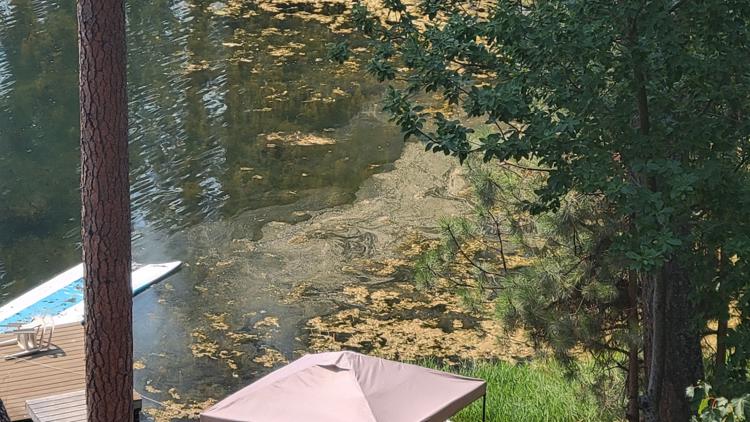IDAHO, USA — The Idaho Department of Health and Welfare (IDHW) is working with the Panhandle Health District (PHD) in issuing a health advisory for both Avondale Lake and Fernan Lake due to harmful algal blooms in the water.
According to the IDHW, recent reservoir samples showed high amounts of cyanobacteria. Cyanobacteria are toxin-producing (cyanotoxins) and can harm people, pets and livestock.
Cyanobacteria are a natural part of Idaho's recreational bodies of water. When temperatures rise, the bacteria populations can bloom, and toxic chemical compounds (cyanotoxins) will be released into the water.
Blooms do not look the same. Some will look like mats, foam, spilled paint, or surface scum. They will also give off a foul odor. Mats can be out of sight on the bottom of the water.
Pets, livestock and wildlife can get sick, and or die within minutes of cyanotoxin exposure.
If you are considering visiting Avondale Lake or Fernan Lake, please take the following precautions while the health advisory is in effect:
- Avoid swimming, wading, or any other contact with the water. Make sure children do not drink the water, or get water on them.
- Make sure pets and livestock do not drink from the water. If they come in contact with the water, make sure to clean their skin or fur with clean water immediately.
- Do not drink or cook with the water. Boiling the water will not remove the toxins and will increase the risk of you becoming sick.
- Wash hands in clean water after handling fish or objects from the water.
- If you choose to eat fish from the water, make sure to clean it off with uncontaminated water. Filet the fish, and remove all fat, skin, and internal organs before cooking. Cyanotoxins can build up inside a fish and the risk to people is unknown.
Here is a list of symptoms to look out for if you were in contact with the water:
- If you touch or swim in the water, you can experience a rash, hives, red eyes, wheezing, coughing, or shortness of breath.
- If you swallow the water, you might experience stomach pain, diarrhea, or vomiting. You may also experience headaches, muscle weakness, or dizziness.
- If you have a damaged liver, your skin might turn yellow and you will have dark urine.
If you think you might have been exposed to cyanobacteria and are experiencing symptoms, please consult your healthcare provider, or call the poison center at 1-800-222-1222.
You can also send an email if you know you experienced these symptoms at algae@deq.idaho.gov
For more info about cyanoHABs, click here to read more from IDHW's website.
The public will be notified once the advisory is no longer in effect.



